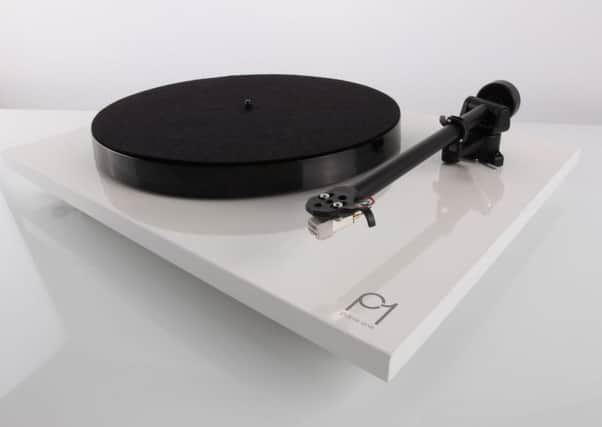Why vinyl records sound no better now than the first time around


Even today, there are tunes from that era I don’t recognise unless the intro “wows” up to speed, the way it used to when the autochanger dropped it onto the stack below.
Nevertheless, vinyl is again big business, and 12-inch LPs have pushed CDs to one side in many high street record shops. You would have thought, given all that has changed since their heyday, that they would sound much better than they used to - but you’d be disappointed: this is 1940s technology we’re dealing with.
Advertisement
Hide AdAdvertisement
Hide AdIf you still have your old hi-fi equipment in the loft, it will, of course, work with the new generation of digitally remastered LP pressings - but if you’re buying new, you have two classes of record player to choose from.
The cheaper option is one of the many USB turntables that litter the shelves of record shops and electrical retailers. These are geared towards convenience rather than quality, and they are ideal for digitising your old 33s, 45s and even 78s to MP3 files you can play on your phone - though you’re unlikely to find many tracks that Spotify hasn’t done already. The process of transferring songs is easy but tedious, since it has to be done in real time.
Some of these cheap turntables are better than others - let price be your guide - but you’re never going to use one to impress your friends with your stereo set-up, the way you did in the Seventies over a fondue pot and a bottle of Blue Nun.
For that rich, seductive sound, the warm click of needle on microgroove that is so beloved of purists, you’ll want to invest in some serious high fidelity - and the surprise here is how much it costs, now that it’s no longer mass produced. Even at the budget end of the market, the admirable and award-winning Rega Planar 1 will set you back £250 and has none of the features we used to regard as standard: no automatic lifting of the tonearm on and off the record, not even a knob to change the speed. Instead, you have to remove the platter and re-align the drive belt when you want to play something at 45rpm.
Advertisement
Hide AdAdvertisement
Hide AdI had also forgotten how fiddly hi-fi turntables are, with a balance weight on the tonearm and, on most models, anti-skating and bias controls that affect the force and angle at which the needle hits the groove. This is exactly why so few people mourned their passing, three decades ago.
Your £250 does not include any form of amplification, and you should not assume that you can plug the Planar 1 directly into your modern hi-fi amp. Record cartridges output far less volume than CDs, and require a dedicated pre-amp stage to raise them to a level the main amplifier can handle. This circuitry has not been standard on most amps since the Nineties, and a standalone pre-amp will run you the thick end of £100.
Records, too, come at premium prices now, even when they are re-releases. The Beatles’ Abbey Road, for instance, costs £18 on vinyl but only £7 on CD - which gives track nine, You Never Give Me Your Money, a somewhat hollow ring. It’s enough to make you wonder whether the past really does sound as good as you remembered it.